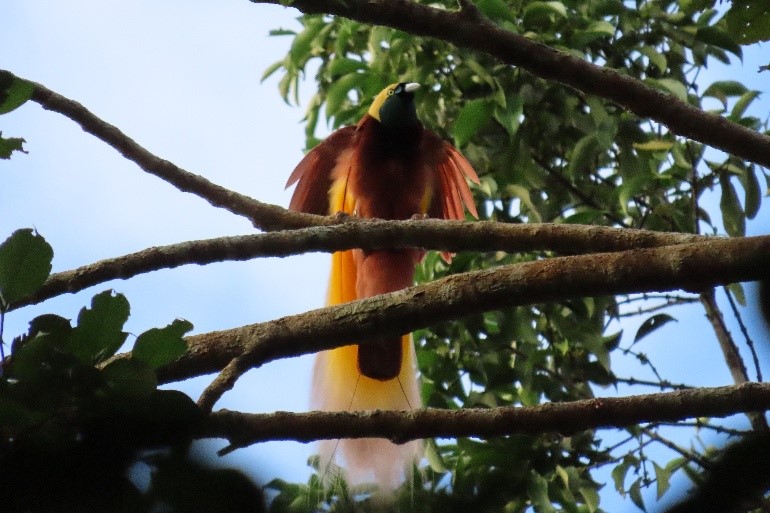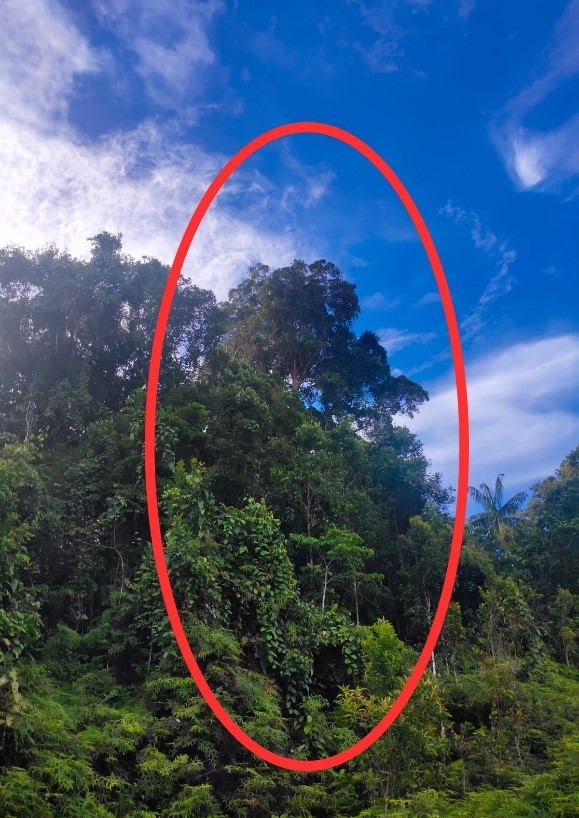
The Greater Bird of Paradise captured on camera in the Asiki Forest, South Papua.
The Greater Bird of Paradise (Paradisaea apoda), is one of Papua’s most iconic treasures. With its dazzling plumage and mesmerizing mating dance, it has earned the nickname “the bird of paradise.” But this species is not only visually attractive, it also plays an important role in the forest ecosystem. What makes it even more fascinating is that the Greater Bird of Paradise exists naturally only in the southern forests of Papua and the surrounding islands.
What secrets make the forests of Papua the only natural home for this magnificent bird? Let’s take a closer look at what makes its habitat so unique.
Humid and Stable Tropical Rainforests
The Greater Bird of Paradise makes its home in the lowland tropical rainforests of Papua. These evergreen forests, stay warm and humid almost all year round, with rainfall ranging from 2,500 to over 5,000 millimeters annually. It’s a landscape that never really dries out – a perfect paradise where they can feed on fruits, perch high on brances, and perform their dazzling mating dances.
The Asiki Forest, in particular, is like a dream home for the Greater Bird of Paradise. Temperatures stay pleasantly at around 25–26°C throughout the year. In addition, it rains throughout the year in this region—with an average of 3,395 mm per year. The high humidity keeps the forest feel cool and moist, providing ideal conditions for plants to thrive and produce the fruits these birds depend on.
This unique mix of steady climate, abundant rainfall, and high humidity creates a truly supportive ecosystem which perfectly in balance. For the Great Bird of paradise, such stability is crucial, especially since their iconic lekking dance displays rely on the delicate harmony of their forest habitat.
Dense Forest Canopy Cover
 For the Greater Bird of Paradise, the forest is both a home and a stage. Its dense, towering canopy offers everything they need – from resting perches and safe nesting spots to a lush green arena for shelter. High among the branches, the males perform their energetic dances, flaunting their shimmering golden feathers to captivate the females.
For the Greater Bird of Paradise, the forest is both a home and a stage. Its dense, towering canopy offers everything they need – from resting perches and safe nesting spots to a lush green arena for shelter. High among the branches, the males perform their energetic dances, flaunting their shimmering golden feathers to captivate the females.
Research in the Asiki Forest shows that the Great Bird of Paradise’s habitat has an average canopy height of 24.5 meters. Imagine the forest as a multi-story building with four main layers: upper canopy, middle canopy, shrub layer, and ground cover. The tree density here is also remarkably high, exceeding 70%. Together, these conditions create a shady and humid environment, an ideal habitat that sustains the life of The Greater Bird of Paradise.
Far from Human Activity

A lekking tree located far from human activity
The Greater Bird of Paradise are extremely sensitive to disturbances—even the sound of footsteps or a soft conversation can cause them stop dancing. Quiet, undisturbed spaces in the Papua’s forests are essential for their survival. Spatial analysis shows that their habitats are, on average, located quite far from human activity: about 2.2 km from road networks, 2 km from oil palm plantations, and 800 meters from developed land. This confirms the fact that the farther they are from human activity, the greater their chance of survival.
Fortunately, most of Papua’s forests remain protected and far from development. These untouched areas serve as the main stage for birds to dance, forage, and breed without interference. The lush, silent forests provide a safe haven for them to perform their spectacular lekking dances and continue their life cycle. Conservation efforts through careful area management are crucial to ensuring that these birds can keep dancing freely in Papua’s forests.
